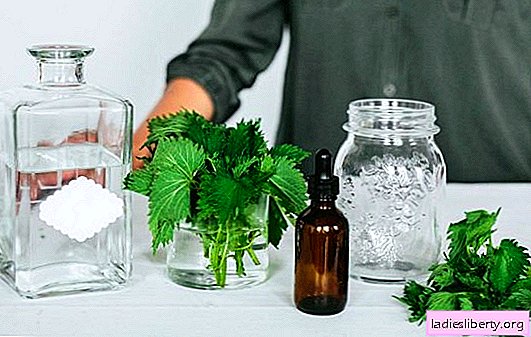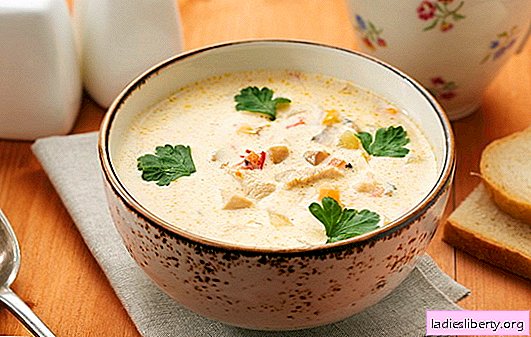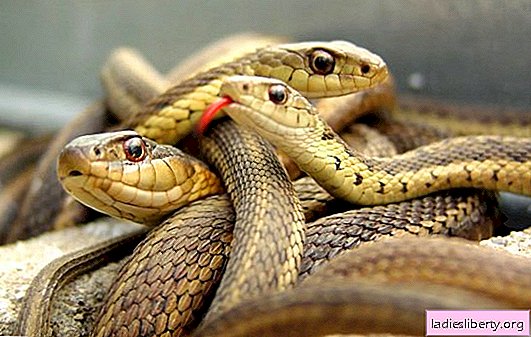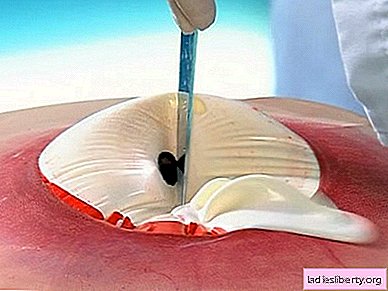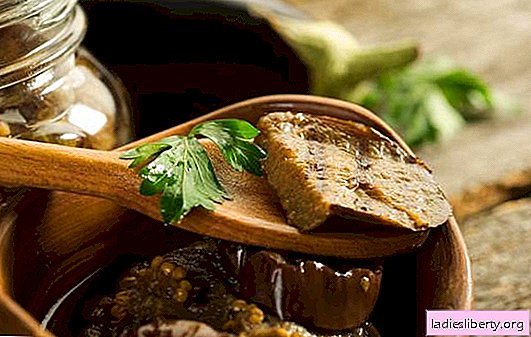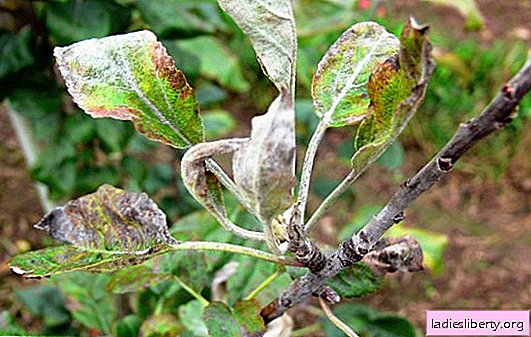
Pear is a very useful fruit tree, but more often than others it is affected by various diseases. To defeat them effectively, you need to know all the signs of pear leaf disease and how to treat them.
For what reason do pear leaves turn red
By autumn on the pear you can see red leaves with black dots. They are usually located at the top of the tree. What led to such consequences, how to deal with it, and what threatens the redness of the leaves of the pear?

This phenomenon has several reasons:
• lack of phosphorus in plant tissues;
• waterlogging of the soil;
• incompatibility of stock and scion.
Phosphorus starvation in a pear
If the redness of the leaves was due to a lack of phosphorus, then this does not happen immediately. The disease begins on the underside of the leaf plate.
How to beat phosphorus starvation in a pear? In early spring, it is necessary to feed the plant with phosphorus-potash fertilizers. It is better to combine root and foliar top dressing. The first feeding is in April. Duration of fertilizer application - 4 months. The last time you need to process the tree is at the end of July. After that, fertilizers should not be abused, as they will reduce the winter hardiness of the tree. Frequency of top dressing: at least once every 14 days.
Soak the roots of a pear
Waterlogging of the soil occurs for several reasons: stagnation of groundwater and rainwater, improper irrigation regime. As a result, the tree suffers from a lack of oxygen at the roots, breathing is difficult, the roots get wet, and the winter hardiness of the plant decreases.
What to do in this case? If the reason for the waterlogging of the soil was the wrong place for planting a seedling, then a young tree needs to be transplanted. Choose a site with a low occurrence of groundwater. The pear does not tolerate low places where rainwater accumulates.
If the landing site is chosen correctly, then it is necessary to establish a watering regime. An adult tree needs moderate watering during the period of active growth. You must also consider the amount of precipitation. When watering, water consumption per tree is up to 30 liters.
What to give with incompatibility of stock and scion
Violation of the rules for holding and selecting seedlings for grafting leads to redness of the leaves of the pear. In a young tree, not only the leaves turn red, but a swim is formed at the site of budding. Such seedlings are subject to replacement.
For stock, it is necessary to choose seedlings, i.e. grown from seeds. This gives a consistently high-quality planting material. On such seedlings, the graft of any kind of pear is well developed. As a rule, experienced gardeners are advised to give a scion for a wild game pear.
Why orange spots appear on pear leaves
Inexperienced gardeners start to panic if rusty spots appear on the leaves of a favorite tree, resembling drips. What happened to the fruit tree, and why did the pear leaves become orange stained?
These symptoms suggest that the plant is affected by a fungal disease called pear rust. The reason for its appearance is the now popular juniper, which is grown everywhere. The causative agents of the disease winter there, which in early spring pass to a pear. At the beginning of the growing season, pear leaves suffer, orange spots appear on them. Later, in mid-summer, seals form on the back of the leaf, which contain fungal spores. If the disease is not treated, then this will lead to the death of the whole tree. The rust passes to the fruits and shoots of the pear.

How to treat pear rust
1. Prevention of the disease is easier than curing it. Remember that next to fruit trees there is no place for juniper. Plants planted near it are more likely to suffer from fungal diseases. This applies not only to pears, but also to plums, apple trees.
2. At the first signs of illness, damaged leaves are removed from the tree, and fallen dry leaves are also collected. All garbage is burned off site.
3. The best environment for the propagation of a fungal disease is high humidity. Therefore, when watering, they try not to get on the leaves of the plant. Foliar top dressing is carried out in the evening in warm, dry weather.
4. If the summer was rainy, then it is recommended to carry out preventive spraying with Bordeaux liquid. The first treatment is carried out in the spring, with the beginning of the growing season, the second - in mid-June.
5. Do not forget about the processing of juniper growing next to fruit trees. All diseased shoots, old needles are removed from it and spraying is carried out.
Pear chlorosis: how to determine and how to treat
The appearance of yellow spots on the leaves of a pear indicates the onset of tree chlorosis. With the development of the disease, the leaves turn completely yellow, the whole process begins with the top of the pear. First, the leaf plate loses its color, turns pale, and then becomes covered with yellow-green spots, which gradually turn yellow. A neglected disease progresses and the leaves die off prematurely.

Chlorosis reduces the yield of the tree, because the pear fruits do not receive the necessary nutrition, they become smaller and fall off. The fruiting buds of the next year are not laid, which leads to loss of the crop for more than one year.
Chlorosis is caused by iron deficiency in the soil on which the plant is grown. In order to save the tree, a number of measures are needed to enrich the soil and plants with elements of iron.
• At the first signs of the disease, it is necessary to spray the pear with iron sulfate or other preparations containing iron.
• It is also necessary to enrich the ground under the tree. To do this, it is dug up and well watered with iron-containing preparations. Recommended irrigation with warm water with iron sulfate. For 10 liters of water add 100 grams of the drug.
Another reason for the onset of chlorosis on pear leaves is the abundant top dressing of a tree with a solution of bird droppings. The development of the disease occurs due to the large number of toxic substances and nitrogen that are contained in it. In addition, flooding during the rainy season or near-occurrence of groundwater can lead to chlorosis. The tree does not receive oxygen in the root zone. To improve the quality and composition of the soil will help mulching with organic matter.
If yellow spots appear on the lower leaves of the pear, then this indicates a lack of nitrogen fertilizers. You should feed the pear with urea, at the rate of 30-35 grams per bucket of water. As nitrogen top dressing is humus, which is introduced into the root zone of the tree.
Do pear leaves turn yellow between the veins? This is due to a lack of zinc. In this case, zinc sulfate preparations are sprayed, at the rate of 25 grams per bucket of water.
Scab on pear leaves: black spots and methods of treatment
This disease is manifested by black spots on the leaves of the pear, which lead to the fall of the leaf cover of the tree. Scab is a fungal disease. At the beginning of its development, the leaves become covered with grayish spots with a characteristic oily coating, later the spots turn black and the leaves die off. The causative agent of the disease is located on the underside of the leaf.

A progressive disease passes to young shoots, which leads to their death. The bark on the branches is peeling, swelling and cracking. Ovaries do not develop on the affected tree. The fruits turn black and fall. The flesh in the affected areas stiffens. The insidiousness of the disease lies in the fact that it affects not only the shoots, leaves and fruits of the pear, but also the flowers. On such trees there is no ovary or its quantity is small.
The pathogen overwinters in fallen leaves, young shoots and fruits.
Methods of dealing with scab
If scab is noticed on the plot, then in autumn it is necessary to collect all the dry leaves and burn them outside the garden. It is also necessary to conduct a shallow digging of the soil under the trees in order to get rid of the remaining spores of the fungus. In early spring, soil and plants are cultivated. You need to do it before the buds open and the sap flow begins. A nitrofen solution is used, which acts not only on the scab, but also other types of fungal diseases.
Infection with scab most often occurs due to thickening of landings and inept pruning. It is important not to allow the tree crown to thicken, to cut the shoots growing inside in time.
A good prevention of scab is to treat the pear with Bordeaux liquid. The number of treatments depends on the degree of damage to the tree. The first treatment is carried out before budding, the second - after flowering. Subsequent treatments can be omitted if no outbreaks have previously been observed.
Important! After flowering, a 1% solution of Bordeaux fluid is used, which reduces the risk of burns on the leaves.
Experienced gardeners in the fight against scab recommend using systemic drugs that have a destructive effect on various diseases.
Bacterial burn: pear leaves turn black and curl
Often, summer residents are faced with a disease that is of an incomprehensible nature, because of which all methods of control are unsuccessful. If the upper leaves of the pear turn black and then curl, then this is most likely a bacterial burn. It has nothing to do with a sunburn. Its causative agent is bacteria that are carried with the wind or birds.
Signs of defeat
At the initial stage of the disease, bacteria settle on peduncles that stop developing, wilt and fall off. Next, the burn goes to the upper leaves of the tree, which turn black and curl. The development of the disease is rapid, the first signs may not be so pronounced.
The development of a bacterial burn contributes to damp, warm weather, when it rains without lowering temperatures. This leads to a greenhouse effect in which pathogens are activated.
Most often, young trees that are not yet ten years old are susceptible to the disease. This is due to their weakened immunity and active sap flow. Older pears are less susceptible to infection.
How to treat a bacterial burn
To prevent this disease is almost impossible. It remains only to increase the immunity of young landings. To do this, use spraying with Bordeaux liquid or copper sulfate.
At the first sign of infection with a bacterial burn, all affected shoots must be cut off immediately. The trimmer needs to be sanitized well.
Trim the affected shoot 20 cm more from the site of infection. This is due to the fact that the disease progresses inside the shoot, which is apparently still healthy.
All cut branches must be burned outside the territory. Slices on the tree must be sanitized and sprayed with antibiotics. For this purpose, Ofloxacin is used, which inhibits the action of bacteria. The number of treatments should be at least three, which are carried out with an interval of 10 days.
Unfortunately, it is not always possible to cure a pear from a bacterial burn. Often time is lost, and the tree has to be replaced with a new one. The sooner the disease appears and treatment begins, the more successful the results will be.

